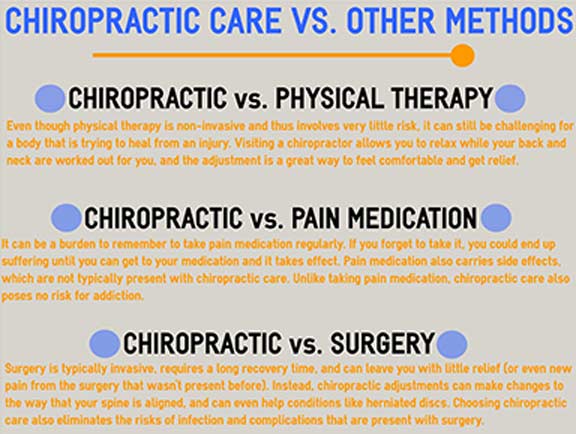The Role Of Stance In Pain In The Back: Tips For Getting And Maintaining Good Alignment Throughout Your Day
The Role Of Stance In Pain In The Back: Tips For Getting And Maintaining Good Alignment Throughout Your Day
Blog Article
Get More Information -Williford Rollins
Keeping appropriate position isn't almost sitting up straight; it has to do with straightening your body in a way that supports your spine and lowers the risk of back pain. The way you rest, stand, and move throughout the day can considerably influence your spine health and wellness. However just how exactly can you guarantee excellent positioning regularly, also throughout busy days loaded with different tasks? Let's dig deeper into the subtle yet impactful adjustments you can make to your daily routine to maintain your back happy and healthy and balanced.
Relevance of Appropriate Stance
Proper stance is essential in keeping a healthy and balanced back and protecting against pain. When you rest or stand with excellent position, your back remains in placement, decreasing strain on your muscle mass, tendons, and joints. This positioning enables the body to distribute weight evenly, avoiding extreme tension on particular locations that can bring about pain and pain. By maintaining your spine correctly aligned, you can also improve your breathing and food digestion, as slouching can press organs and restrict their capability.
Furthermore, preserving great pose can boost your total appearance and self-confidence. When you stand tall with your shoulders back and head held high, you show confidence and show up even more approachable. Excellent stance can also make you feel a lot more energized and alert, as it advertises correct blood circulation and permits your muscular tissues to work successfully.
Incorporating proper posture right into your daily routine, whether resting at a desk, strolling, or working out, is vital for avoiding back pain and advertising general health. Keep in mind, a little modification in just how you hold on your own can make a significant distinction in just how you feel and work throughout the day.
Common Postural Mistakes
When it involves keeping excellent stance, several people unknowingly make typical mistakes that can add to back pain and pain. Among medication for back pain is slumping over or stooping over while sitting or standing. This placement puts extreme strain on the spine and can cause muscle discrepancies and pain in the future.
One more usual error is overarching the reduced back, which can flatten the natural curve of the back and trigger pain. In addition, crossing legs while resting may feel comfortable, however it can produce an inequality in the hips and hips, leading to postural issues.
Using a pillow that's also soft or also strong while sleeping can additionally impact your placement and contribute to pain in the back. Lastly, constantly craning your neck to consider displays or readjusting your setting regularly can stress the neck and shoulders. Bearing in mind these usual postural errors can aid you maintain far better positioning and reduce the risk of pain in the back.
Tips for Correcting Placement
To enhance your positioning and lower pain in the back, it's necessary to concentrate on making small modifications throughout your day-to-day routine. Beginning by bearing in mind your pose. When resting, ensure your feet are flat on the flooring, your back is straight, and your shoulders are relaxed. Stay clear of slouching or leaning to one side. Use ergonomic chairs or paddings to sustain your reduced back.
When standing, distribute your weight evenly on both feet, maintain your knees slightly curved, and embed your pelvis. Engage your core muscular tissues to support your back. Take breaks to stretch and walk if you have a less active work. Incorporate exercises that enhance your core and back muscle mass, such as planks or bridges.
While sleeping, make use of a pillow that sustains the natural contour of your neck to keep appropriate back positioning. Prevent sleeping on your belly, as it can stress your neck and back. By being mindful of these tips and making small changes, you can slowly correct your alignment and relieve pain in the back.
low back spasms in mind, keeping excellent pose is vital to preventing pain in the back and promoting spinal health and wellness. By bearing in mind your positioning, dispersing weight equally, and engaging your core muscular tissues, you can lower stress on your back and decrease the threat of pain and injury. Integrate ergonomic assistance, take routine breaks to stretch, and reinforce your core and back muscles to keep proper alignment throughout the day. Your back will thank you for it!
